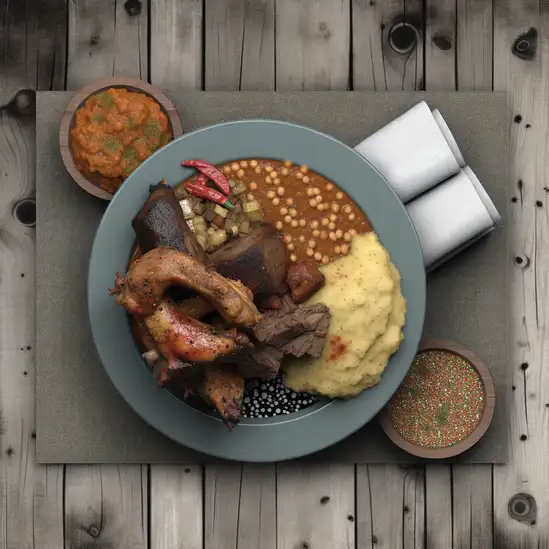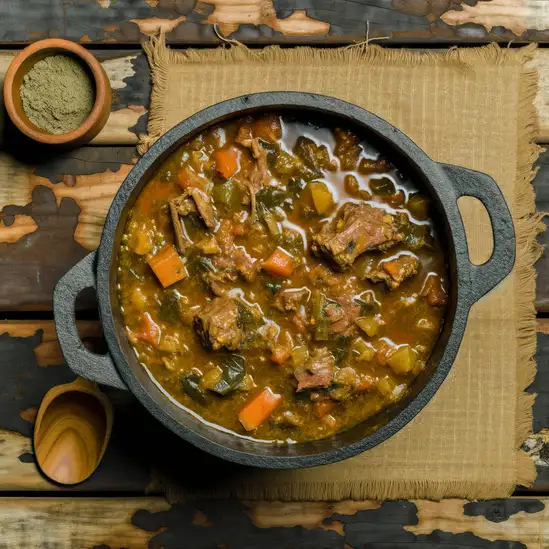



Imagine stepping into a place where the cool Atlantic breeze mingles with the warm desert sun,creating a vibe that''s both refreshing and oddly soothing—that''s Swakopmund for you. This coastal town in Namibia feels like a charming blend of old-world German colonial architecture and vibrant African spirit,all wrapped up in the vastness of the Namib Desert meeting the sea. Walking along the palm-lined streets,you’ll hear the distant crash of waves,the chatter of locals in a mix of languages,and the occasional call of seabirds overhead. The salty tang of the ocean air mixes with the earthy scent of dry sand,making every breath feel alive and invigorating. Swakopmund’s character is a delightful dance between adventure and relaxation. You can start your day with a fresh cup of coffee at a cozy café,watching fishermen haul in their catch,then spend the afternoon sandboarding down towering dunes or exploring quirky local markets filled with handcrafted treasures. The town’s laid-back charm invites you to slow down and savor moments—whether it’s tasting freshly grilled seafood that bursts with ocean flavors or chatting with friendly locals who share stories of desert life. What really makes Swakopmund stand out is its unique blend of cultures and landscapes. Here,the desert’s stark beauty meets the lively pulse of a seaside town,creating an atmosphere that’s both energizing and comforting. It’s a place where every corner holds a story,and every experience feels like a warm invitation to explore more.
The information on this page is currently being reviewed by Tripkliq and should be used as a guide only
Eng word: Hello
Eng pronunciation: Wah-lah-lah-poh / Wah-leh-leh-poh
Local language: Wa lala po / Wa lele po
Eng word: Goodbye
Eng pronunciation: Kah-loon-gah nah-wah
Local language: Kalunga nawa
Eng word: Thank you
Eng pronunciation: Tahn-gee oo-neh-neh
Local language: Tangi unene
Eng word: How much
Eng pronunciation: Oh-shee lee peh-nee?
Local language: Oshi li peni?
Eng word: Toilet
Eng pronunciation: On-joo-goh
Local language: Ondjugo
Eng word: Help me
Eng pronunciation: Ndee-shahn-geh
Local language: Ndishange
Eng word: Yes
Eng pronunciation: Eh-eh-noh
Local language: Eeno
Eng word: No
Eng pronunciation: Ah-ah-yeh
Local language: Aaye
Eng word: Excuse me
Eng pronunciation: Nda-pahn-doo-lah
Local language: Ndapandula
Swakopmund was founded in 1892 by Captain Curt von François as the main harbor for German South West Africa, making it a significant historical site in Namibia.
The Swakopmund Jetty, constructed in 1905, is a prominent historical landmark. Initially built for cargo ships, it now serves as a popular spot for tourists to enjoy ocean views.
Swakopmund is renowned for its well-preserved German colonial architecture, including buildings like the Woermannhaus, which was built in 1905 and now houses a public library and art gallery.
The Swakopmund Lighthouse, built in 1902, is one of the city's most iconic structures. It stands 21 meters tall and offers panoramic views of the surrounding area.
The Hohenzollern Building, constructed in 1906, is a striking example of German colonial architecture. Originally a hotel, it now serves as a residential and commercial building.
Founded in 1951, the Swakopmund Museum is the largest privately run museum in Namibia. It offers extensive exhibits on the natural history, culture, and colonial history of the region.
The Martin Luther Steam Engine, built in 1896, is a unique historical artifact located just outside Swakopmund. It was intended to transport goods but was abandoned due to technical difficulties.
The Kaiserliches Bezirksgericht, or Imperial District Court, was built in 1901. This historic building now serves as the State House and is a fine example of colonial-era architecture.
The Swakopmund Railway Station, constructed in 1901, is a beautifully preserved building that now functions as a hotel. It played a crucial role in the transportation network during the colonial period.
In Swakopmund Constituency, the most common Power Adaptor is Type D, Type M.



A South African-style barbecue featuring various meats cooked over an open flame, often enjoyed with friends and family.

A slow-cooked stew made in a cast-iron pot, often containing meat, vegetables, and spices, reflecting the local culinary traditions.

A traditional dried and cured meat snack, often made from beef or game, seasoned with spices and vinegar.

Grilled meat skewers, typically seasoned with spices and served with a spicy sauce, popular at street markets.

A traditional porridge made from maize meal, often served with meat or vegetable stews.

Freshly caught seafood, including fish and shellfish, often grilled or served with local spices, reflecting Swakopmund's coastal location.
Imagine a place where the ocean’s salty breeze mingles with the scent of blooming fynbos,and every corner pulses with a vibrant mix of cultures and stories. That’s Cape Town for you—a city that feels alive in the best way. From the moment you step onto the bustling streets,you’re wrapped in a warm,welcoming energy. The iconic Table Mountain looms overhead,its flat top often dusted with clouds,inviting you to explore its trails or simply admire its majesty from a cozy café. The city hums with a rhythm that’s both laid-back and electric,where street musicians play soulful tunes and the chatter of locals spills out from colorful markets.
Walking through neighborhoods like Bo-Kaap,you’ll be greeted by a kaleidoscope of pastel houses and the irresistible aroma of spicy Cape Malay dishes wafting through the air. The flavors here are bold and comforting—think fragrant curries,fresh seafood caught just hours before,and sweet koeksisters that melt in your mouth. At the V&A Waterfront,the lively buzz of boats bobbing in the harbor mixes with the laughter of friends sharing a glass of local wine,while the distant call of seagulls reminds you of the city’s close embrace with the sea.
Cape Town’s charm lies in its contrasts:rugged landscapes meet urban sophistication,history blends with modern creativity,and every sunset paints the sky in hues you’ll want to bottle up and take home. It’s a place that invites you to slow down,breathe deeply,and soak in moments that feel both timeless and thrillingly new.
If you ever find yourself wandering through Victoria,the capital of Seychelles,you’ll immediately notice its laid-back charm mixed with a vibrant pulse that feels both intimate and alive. It’s not a sprawling metropolis but a cozy town where the ocean breeze carries the scent of salt and tropical flowers,and the chatter of Creole,English,and French blends into a warm,welcoming hum. Walking through the colorful streets,you’ll catch glimpses of bustling markets where fresh spices,exotic fruits,and fragrant vanilla pods fill the air,inviting you to taste the island’s rich flavors.
Victoria’s character is a beautiful blend of cultures,reflected in its colonial architecture,lively street art,and the friendly smiles of locals who are always ready to share a story or recommend their favorite spot. The city feels like a crossroads of history and nature,with the iconic clock tower standing proudly as a reminder of its past,while just a short stroll away,the lush Botanical Gardens offer a peaceful escape filled with giant tortoises and vibrant tropical plants.
What really makes Victoria special is how it balances the simplicity of island life with a genuine sense of community and culture. Whether you’re sipping a freshly brewed Seychellois tea at a café,listening to the distant rhythm of sega music,or watching fishermen haul in their catch at the harbor,there’s a comforting rhythm here that invites you to slow down,breathe deeply,and soak in the moment. It’s a place that stays with you long after you leave.
If you find yourself wandering through Port Louis,you’ll immediately notice its vibrant pulse—a lively mix of old-world charm and bustling modern life that feels both warm and inviting. The city hums with energy,from the colorful stalls of the Central Market where spices,fresh tropical fruits,and fragrant street food scents mingle in the air,to the chatter of locals bargaining and sharing stories. It’s a place where the past and present dance together,with colonial architecture standing shoulder to shoulder with sleek skyscrapers.
Walking along the waterfront,the salty breeze carries the distant calls of fishermen and the gentle clinking of boats bobbing in the harbor. The streets are alive with a blend of cultures—Creole,Indian,Chinese,and French influences swirl through the food,music,and festivals. You can’t help but be drawn into the rhythm of sega music playing softly from a nearby café or the rich aroma of dholl puri being freshly made on a street corner.
Port Louis isn’t just a city; it’s a sensory experience. The vibrant colors of the market,the warmth of the people,and the tantalizing tastes of local dishes like octopus curry or gateau piment make it unforgettable. It’s a place where every corner tells a story,and every moment feels like an invitation to explore deeper. Trust me,once you’ve soaked in its unique spirit,you’ll carry a piece of Port Louis with you long after you leave.
Home to the historic Stone Town and stunning beaches,Zanzibar City is a hub for exploring the Zanzibar Archipelago's tropical islands.
ExploreImagine stepping into Maputo and instantly feeling the pulse of a city that’s alive with rhythm and warmth. The air carries a mix of salty ocean breeze and the rich aroma of freshly grilled seafood from street vendors,while the streets hum with the chatter of locals and the distant beat of marrabenta music. It’s a place where colonial architecture with its pastel hues stands shoulder to shoulder with vibrant markets bursting with colorful fabrics,spices,and handcrafted treasures. Walking along the waterfront,you catch glimpses of fishermen hauling in their catch,and the scent of coconut and tropical fruits mingles with the salty air.
Maputo’s charm lies in its effortless blend of cultures—Portuguese influences mingle with African traditions,creating a unique,laid-back vibe that’s both cosmopolitan and deeply rooted in local life. The city feels like a warm embrace,where people greet you with genuine smiles and invite you to share in their stories over a cup of strong coffee or a cold bottle of 2M beer. At night,the city transforms as jazz and Afrobeat spill out from cozy bars,inviting you to dance or simply soak in the lively atmosphere.
What really stays with you is the city’s spirit—resilient,creative,and welcoming. Whether you’re wandering through the bustling Mercado Central,savoring fresh prawns at a beachside shack,or watching the sunset paint the sky over the Indian Ocean,Maputo leaves you with a sense of having discovered a place that’s both vibrant and heartfelt,a city that invites you to slow down and savor every moment.
Durban feels like a warm hug from the moment you arrive—its golden beaches stretch endlessly,kissed by the Indian Ocean’s gentle waves and a breeze that carries the scent of salt and sizzling street food. Walking along the beachfront,you’ll hear the rhythmic crash of surf mingling with the lively chatter of locals and the distant beat of drums from a nearby market. The city pulses with a vibrant energy,a unique blend of Zulu heritage and Indian influences that colors everything from the spicy aromas wafting from curry stalls to the intricate beadwork in local crafts.
What really makes Durban stand out is its laid-back yet lively spirit. You can spend your mornings wandering through the bustling Victoria Street Market,where the air is thick with the fragrance of fresh spices and ripe tropical fruits,and your afternoons lounging under palm trees,watching surfers dance on the waves. The city’s warmth isn’t just in the weather—it’s in the smiles of the people,the rich storytelling in the local music,and the way every meal feels like a celebration of culture.
Durban invites you to slow down and savor life,whether that’s through a plate of bunny chow,a stroll in the lush Botanical Gardens,or a sunset cruise along the harbor. It’s a place where the ocean’s calm meets the city’s vibrant heartbeat,leaving you with a sense of belonging long after you’ve left.
Scammers install skimming devices on ATMs to steal card information when tourists withdraw cash.
Tourists are offered poor exchange rates or given counterfeit currency when exchanging money with unauthorized dealers.
Scammers create fake online listings for accommodations, taking deposits from tourists for properties that don’t exist or are already occupied.
Scammers approach tourists claiming to represent local charities, asking for donations that never reach the intended cause.
Scammers pose as licensed tour guides and offer tourists fake or substandard tours, often charging high fees upfront.
Unregistered taxi drivers target tourists, charging exorbitant fares for short distances or taking longer routes to inflate the cost.
Groups create distractions, such as asking for directions or performing street acts, while accomplices pickpocket tourists.
Street vendors sell souvenirs or crafts at inflated prices, especially to tourists unfamiliar with local pricing.
The use, possession, and trafficking of illegal drugs are strictly prohibited in Swakopmund Constituency, as in the rest of Namibia. The country has stringent laws against drug-related offenses, and violators can face severe penalties, including imprisonment and heavy fines. Tourists should avoid any involvement with illegal drugs and be aware that even small quantities can lead to serious legal consequences. Prescription medications should be carried with a valid prescription and in their original packaging to avoid any misunderstandings with law enforcement.
In Swakopmund Constituency, Namibia, smoking is generally regulated in public spaces. Smoking is prohibited in enclosed public areas, including restaurants, bars, and public transportation. Designated smoking areas may be available in some establishments, but it is advisable to look for signage or ask staff. Smoking is also restricted in certain outdoor areas, such as near schools and hospitals. Tourists should be mindful of local regulations and always dispose of cigarette butts properly to avoid fines.
Vaping in Swakopmund is subject to similar regulations as smoking. Vaping is not allowed in enclosed public spaces and certain outdoor areas. While the regulations may not be as explicitly defined as those for smoking, it is best to follow the same guidelines and use designated smoking areas when available. Tourists should be considerate of others and avoid vaping in crowded or sensitive areas.
What are other people saying about Swakopmund Constituency?
Recent Social posts about Swakopmund Constituency
There is nothing to show you for now.